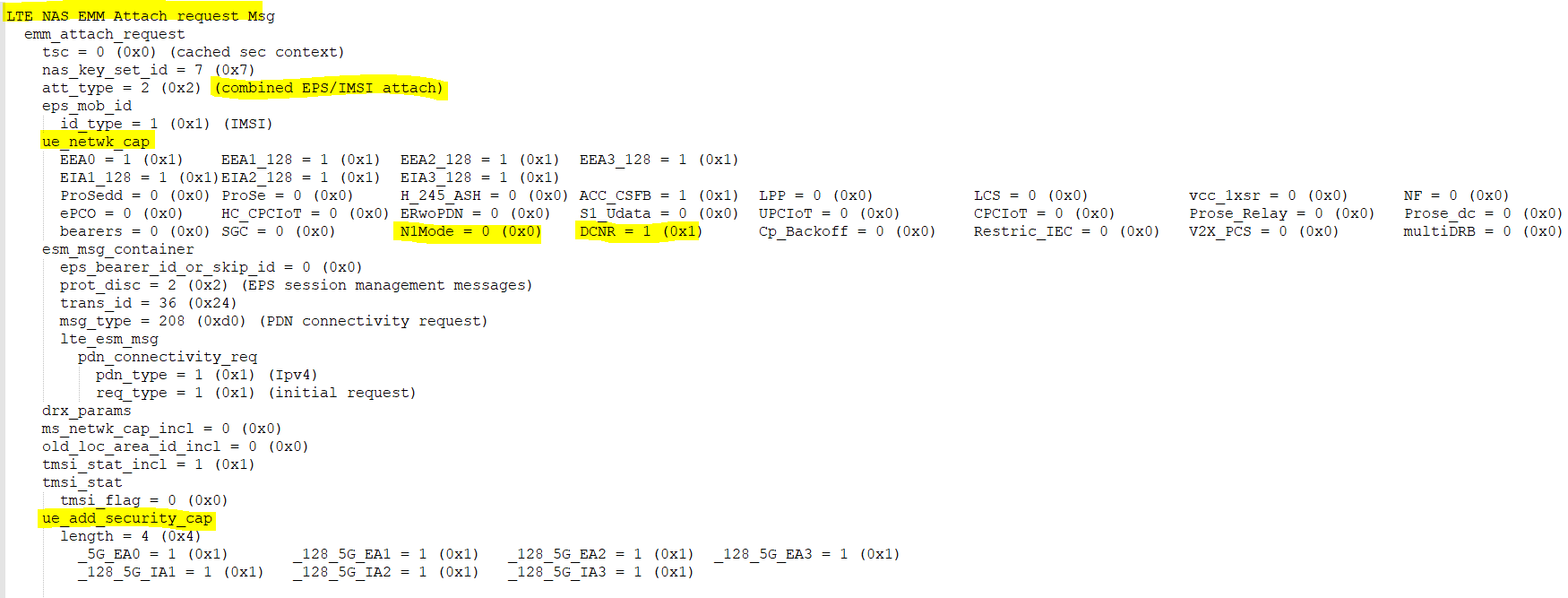5G NR NSA Mode: UE Network and Radio Capability Enquiry
In any wireless system, for accurate, efficient coordination and intercommunication base station must know the all capability about the UE. The base station enquires the UE Capability and UE report all information. After knowing the UE capability, the base station can make correct scheduling for the UE. If the UE supports a certain feature or function, the base station shall configure UE for it and if the UE does not support a certain feature, the base station shall not configure the function for the UE.
UE capability is divided into Network capability and Radio capability.
- Network Capability : UE proactively send its network capabilities over NAS message: Attach Request to Core Network
- Radio Capability: Network (base station) enquire about UE’s radio capabilities involving following two processes: UE Capability request and UE Capability report. When the base station needs to ask UE Capability, the base station send a UECapabilityEnquiry to the UE and UE responds with UECapabilityInformation.

Network Capability
UE network capability includes supported algorithm for encryption and integrity (EEA, EIA), supported of features like CIoT, ProSe (D2D), DCNR, V2X etc. Structure for same is shown following figure.



- Dual connectivity with NR (DCNR) support within 9th Octet, 5th bit – This bit indicates the capability for dual connectivity with NR.
- 0 dual connectivity with NR not supported
- 1 dual connectivity with NR supported
- 0 dual connectivity with NR not supported
- N1 mode supported (N1mode) (9th Octet, 6th bit) – This bit indicates the capability for N1 mode.
- 0 N1 mode not supported
- 1 N1 mode supported
Radio Capability:
- Each UE can have different capabilities. This UE capability is applicable to all carriers and carrier combinations supported by the UE.
- UE Capability Band Combinations : Each Band Combination can have different capabilities.
- For e.g. Band3+Band77, Combination supports a certain UE capability, but Band1+Band78 may not support the UE capability.
- UE Band Capability: Each Band can have different capabilities. For example, Band 77 supports a certain UE capability, but Band 78 may not support the UE capability. Another method of UE capability classification is to classify according to the protocol stack. When the UE Capability is actually reported, it is also reported hierarchically according to the protocol stack.
UE radio capability includes specific UE Capability:
- UE-EUTRA-Capability
- accessStratumRelease rel15,
- ue-Category
- pdcp-Parameters
- phyLayerParameters
- rf-Parameters
- measParameters
- featureGroupIndicators
- UE-NR-Capability
- pdcp-Parameters
- rlc-Parameters
- mac-Parameters
- phy-Parameters
- rf-Parameters
- measAndMobParameters
- fr1-Add-UE-NR-Capabilities
- fr2-Add-UE-NR-Capabilities
- featureSets
- UE-MRDC-Capability
- rf-ParametersMRDC
- featureSetCombinations
In real network, base station generally query ueCapability twice or three time depending on the implementation, and the UE reports UECapabilityInformation accordingly.

In first, UECapabilityEnquiry about eutra,Utra and gren-CS and second about eutra-nr and nr Radio Access Technology (RAT)

Related Posts:
- 5G NR SCG Failure and Radio Link Failure
- 5G NR Signaling Radio Bearers (SRBs)
- 5G NR Cell Access Control
- 5G NR Measurements: RSRP, RSSI, RSRQ and SINR
- 5G NR SS-RSRP Value Measurement Mapping
- 5G NR RRM Measurement Requirements



